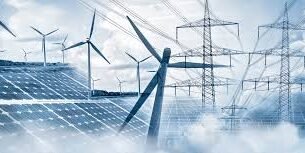In Short : Ethiopia has officially opened Africa’s largest hydroelectric dam on the Blue Nile, showcasing its aspirations for renewable energy while inciting protests from Egypt regarding water security. This initiative enhances clean energy production in conjunction with solar power and sustainable development objectives.
Fueling Strategic Expansion and Innovation
The Grand Ethiopian Renaissance Dam (GERD) is anticipated to produce thousands of megawatts, establishing Ethiopia as a significant power exporter within Africa. In addition to hydroelectric power, the nation is investigating solar panels and renewable resources to broaden its clean energy capacity and lessen dependence on non-renewable resources.
Preserving Equity While Growing Tech Capabilities
Ethiopia asserts that the dam will ensure fair electricity access for millions who currently do not have power. Coupled with investments in solar lighting systems and renewable grids, this initiative aims to maintain equity while enhancing regional technological and energy capabilities.
Clean Energy Impact / Relevance
The dam highlights Africa’s transition to clean energy, with hydro and solar systems serving complementary functions in sustainable development. The attention of investors on solar industries’ share prices and SW Solar’s share price indicates a broader confidence in the role of renewable energy in climate resilience and economic advancement.
About Ethiopia’s Renewable Energy Push
Ethiopia is swiftly enhancing its status in Africa’s clean energy sector. Through the integration of hydropower, solar systems, and renewable resources, the country aims to achieve sustainable development while positioning itself as a model for large-scale green infrastructure initiatives.




